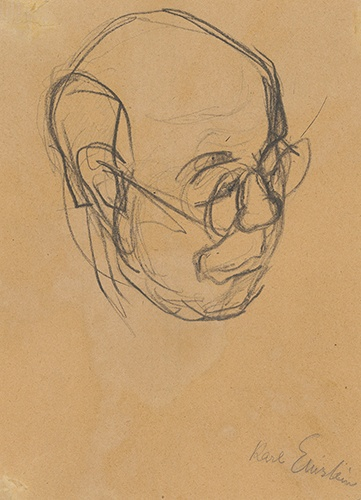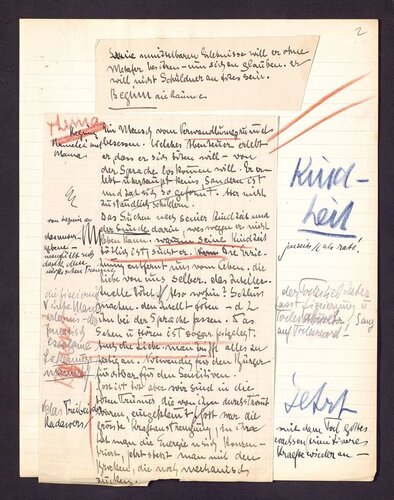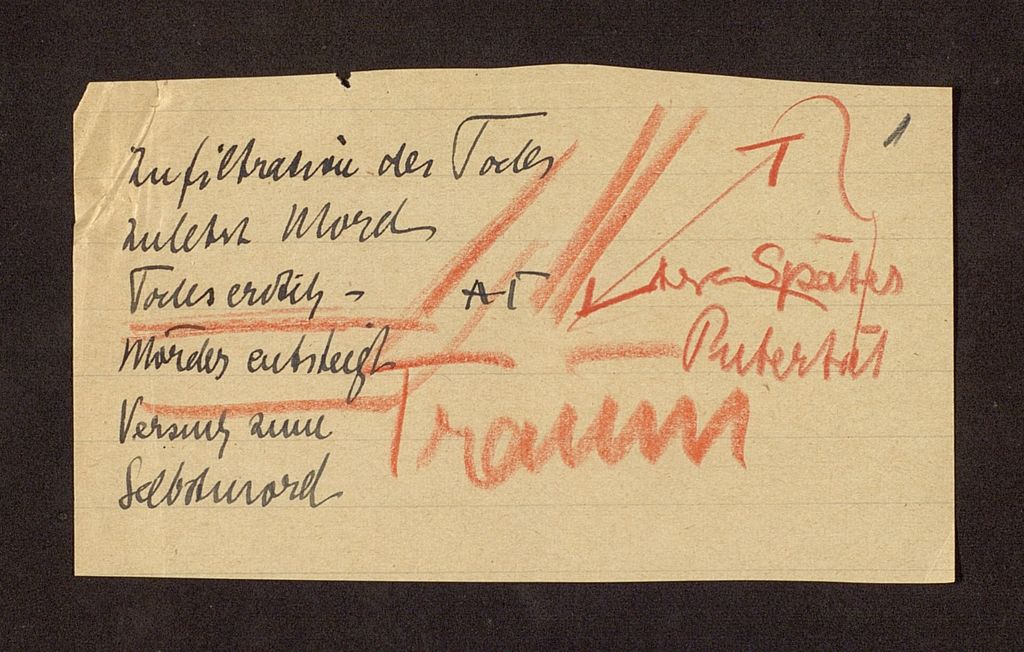
Carl Einstein. Works and letters
Carl Einstein (1885-1940) was one of the most important art critics of the early 20th century, whose programmatic writings influenced the contemporary art scene. With his experimental prose, a few stories and the novel Bebuquin oder Die Dilettanten des Wunders, he played a significant role in literary Expressionism. The archive and collection encompass work manuscripts and notes, preparatory work for major projects such as Handbuch der Kunst, Histoire de lʼart and Bebuquin II, excerpts and drafts, personal documents and photographs, along with collections of portraits, newspaper reports and letters to Tony Simon-Wolfskehl and Maria Einstein, among others.

Born on 26/04/1885 in Neuwied (Rhineland) – died on 05/07/1940 near Pau in the French Pyrenees.
After abandoning a banking apprenticeship in 1904, he studied philosophy, art history, history and classical philology in Berlin, among others with Georg Simmel; 1907 first stay in Paris, he became acquainted with Georges Braque, Pablo Picasso and Juan Gris; first publications, literary works and academic art studies published in the magazines Hyperion and Die Aktion; 1914 war volunteer; 1915 publication of Einstein’s book Negerplastik, an examination of African principles of art; 1916 wounded, transferred to civil administration in Brussels, worked at the Colonial Office library there, Einstein became acquainted with Gottfried Benn, Carl Sternheim and Otto Flake; 1918 returned to Berlin, collaboration on the Dada magazines Die Pleite and Der blutige Ernst; critical analysis of Constructivism, Cubism and Surrealism; 1926 publication of his art-historical review Die Kunst des 20. Jahrhunderts (The Art of the 20th Century); 1928 moved to Paris, co-published the magazine documents; 1933 – his stay abroad became exile; 1936–1939 participation in the Spanish Civil War; 1940 internment at the Gurs camp in the Pyrenees, release; because he had fought in the Spanish Civil War he was not allowed to flee through Spain, he committed suicide in the Gave de Pau River.
Archive and collection
Narrative prose, including Bebuquin, Bebuquin II; theoretical writings, including Die Fabrikation der Fiktionen (The Fabrication of Fiction), Handbuch der Kunst (Handbook of Art), Histoire de l’art; poetry; letters to Maria Einstein, Hans Pfitzner, Tony Simon-Wolfskehl and others; bio-bibliographical documents, collections for the archive including reviews, essays, pictures, posters and invitations.


History of the holdings
The Berlin Bequest was donated to the Archives of the Akademie der Künste in 1962 by Maria Einstein, Carl Einstein’s first wife, with further parts donated later on by Einstein’s daughter Nina Auproux. It includes Einstein’s early work up until he separated from Maria Einstein at the beginning of the 1920s. The Paris Bequest, which includes later works, was donated by his second wife, Lyda Guévrékian. After Einstein’s internment and suicide, it survived in the possession of his friend, painter Georges Braque and, following an interim period at the University Library of Göttingen, came to the Akademie in 1964. The collection was founded by literary scholar Sibylle Penkert. The archive is on the Protection of Cultural Assets list: No. 307.
